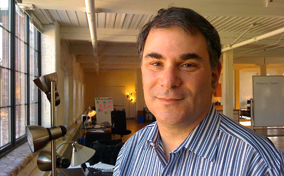 How many times have you heard the expression, you’re preaching to the choir? As if engaging with people who share your values and relate to your point of view is a limiting or bad thing. The adage implies that we should find other people, not yet indoctrinated, to engage with. It took me a while to figure it out, but the age-old adage is wrong. You should preach to the choir because that’s the only way to mobilize transformational change. If you want to transform anything find people who want to change, connect them with each other in a purposeful choir, and enable them to create an entirely new song. Proselytizing doesn’t work. You can’t make people join the choir if they don’t want to. Focus on people who want to be in the choir and make it easier for them to sing.
How many times have you heard the expression, you’re preaching to the choir? As if engaging with people who share your values and relate to your point of view is a limiting or bad thing. The adage implies that we should find other people, not yet indoctrinated, to engage with. It took me a while to figure it out, but the age-old adage is wrong. You should preach to the choir because that’s the only way to mobilize transformational change. If you want to transform anything find people who want to change, connect them with each other in a purposeful choir, and enable them to create an entirely new song. Proselytizing doesn’t work. You can’t make people join the choir if they don’t want to. Focus on people who want to be in the choir and make it easier for them to sing.
I used to believe that proselytizing worked to catalyze transformational change by convincing people who didn’t know they had to change that they needed and wanted to change. Over a thirty-year career spanning industry, consulting, and government I believed in and implemented a proselytizing model to enable change. For years I believed that if I just yakked long and loud enough, if I just put together and presented one more smart consulting deck, and if I adopted what I call my ‘Jewish Aunt” approach to management by nudging I would ultimately wear you down and you would change. It didn’t work. If people don’t want to change they don’t. Sure, there was the occasional convert and a solid track record of enabling incremental change to the way things work today. However, my goal has always been and remains transformational change. No matter how hard I tried, no matter how smart and eloquent I deluded myself into thinking I was, people who didn’t want to change, didn’t change. The 21st century screams for transformation not tweaks. We need a new theory of change worthy of the 21st century.
I have completely changed my approach and theory of change. Ten years ago I founded the Business Innovation Factory (BIF) to put this new theory to work in the real world enabling leaders to design and test new transformational business models in education, health care, and government. Now, instead of proselytizing I believe in a catalyst model of change. Don’t waste time trying to convert those that don’t want to change, find people who want to change and preach to the choir. You will make more progress that way. Allow your choir to grow organically. Trust the choir to create the playlist. Inspire everyone in the choir to be a songwriter. Celebrate and welcome diversity in your choir. The more diversity the better because the gold and best value-creating ideas are in the grey areas between our silos, sectors, and disciplines. The most effective choirs for change welcome voices from every range, weight, and timbre.
Leadership and mobilizing transformational change in the 21st century is about being a catalyst. It’s about getting a reaction started and then getting out of the way.
I remember back in high school and college chemistry learning about catalysts, the reagents used to get chemical reactions started. We need more human catalysts to help us get the transformation we all know we need started. Catalysts know the reaction isn’t about them. They know they’re starting something bigger than themselves. The social system transformation we need is bigger than any one of us. Catalysts have an important role to play but know social change will only happen by getting the choir started and getting out of the way to let the choir’s siren songs work their magic. I also remember from science class that the catalyst doesn’t get used up in the reaction surviving to catalyze another day!
A catalyst model of change is about creating the conditions so people who want to change can connect with others like them to create purposeful choirs. Leadership is no longer about command and control or about moving human capital around the organizational chessboard. Leadership is about inspiring random collisions and connections in purposeful ways to solve real world problems. It’s about creating the conditions to catalyze engaged choirs both within and outside of the organization. A catalyst model of change isn’t about pushing ideas down trying to convert the uninterested masses it’s about pulling ideas up to find their choir. We need to catalyze self-organized choirs around the world enabled to explore and test transformational ideas and approaches at a scale equal to the scope of the social challenges we face. Go ahead and preach to the choir.









Leave a Reply